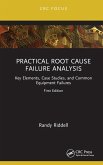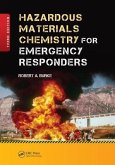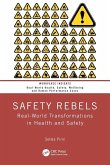This book makes Hazardous or Electrical Area Classification simple. In plants processing flammable materials, every effort is made to avoid the escape of such materials and in addition, stringent measures are taken to exclude sources of ignition. A complex array of standards surround this topic which has lead to an overly conservative approach being taken. This type of approach means that much more expensive electrical apparatus than is necessary is installed.
To avoid this unnecessary expenditure, Dr Groh clearly explains the relevant standards, so that accurate assessment of the risks associated with hazardous areas is possible. He also identifies possible ignition sources and methods of designing apparatus which do not cause sparks thereby maintaining safety.
Hinweis: Dieser Artikel kann nur an eine deutsche Lieferadresse ausgeliefert werden.
To avoid this unnecessary expenditure, Dr Groh clearly explains the relevant standards, so that accurate assessment of the risks associated with hazardous areas is possible. He also identifies possible ignition sources and methods of designing apparatus which do not cause sparks thereby maintaining safety.
Hinweis: Dieser Artikel kann nur an eine deutsche Lieferadresse ausgeliefert werden.
"This book was written for engineers, scientists, plant safety personnel, and students in the field of electrical engineering to provide them with an introduction to the basic principles of explosion protection of electrical equipment and the relevant protection techniques. It certainly fulfills its objectives as it presents much useful and practical information on various types of electrical equipment and protective measures used in industry. It will be more useful to engineers in the UK and Europe than for engineers in the US, but even these will benefit from it if they work for a multi-national corporation which has plants outside the US." --Journal of Loss Prevention in The Process Industries"Groh discusses both theory and practice. The technical(mathematical) basis for explosion protection is well developed. The theory and practice are well illustrated with numerous figures and photographs of installations...I believe the book will be of significant interest to engineers in the field." --Journal of Hazardous Materials








